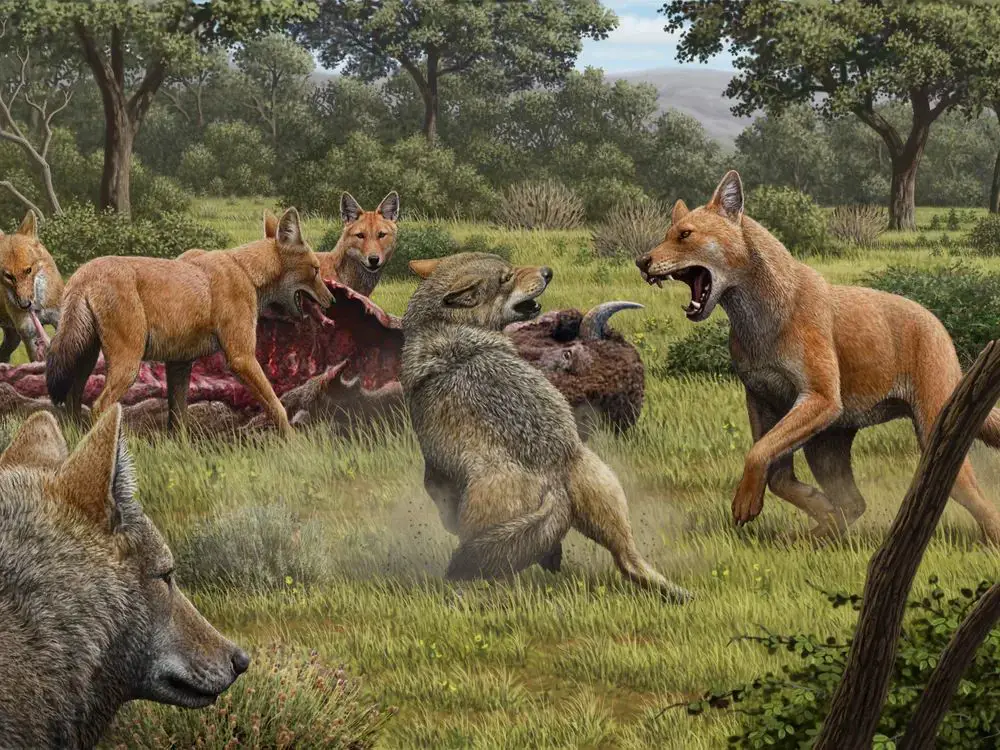Introduction
The status of dogs as pets or animals is an interesting question, touching on how humans relate to and categorize other creatures. This article will examine the dual designation of dogs as both pets and animals, analyzing what each term means and how dogs can fit both definitions. Key issues to be addressed include: How do we define pets versus animals? What legal protections are afforded to pets and animals? Do dogs have a special status that sets them apart from other creatures? By considering these questions, we can gain insight into the unique relationship between humans and dogs.
Defining ‘Pet’
A pet is an animal that shares a close relationship with humans and lives dependent on human companionship and care. Pets are domesticated animals that live symbiotically with people, providing affection, emotional support, and enjoyment in exchange for food, shelter, and healthcare from their human caretakers.
What distinguishes a pet from other domesticated animals is that a pet is not raised for any utilitarian or commercial purpose. While livestock like cows, chickens, and pigs are kept for their products like milk, eggs, and meat, pets like dogs, cats, and rabbits are kept solely for companionship and bonding.
Pets are not bred or raised to be eaten, work on farms, or serve any strictly practical purpose. The majority of pets live indoors, are considered part of the family, and receive names, toys, and other signs of affection from their owners. This close bond for mutual emotional benefit is the defining characteristic of a pet animal.
Defining ‘Animal’
Scientifically speaking, an animal is a multicellular organism that feeds on organic matter, typically having specialized sense organs and a nervous system and able to respond rapidly to stimuli. Animals are a major group of organisms that make up one of the kingdoms of life on Earth. They are distinct from plants, fungi, protists, archaea and bacteria.
Animals range in length from microscopic nematodes and rotifers under 1 mm to the blue whale at up to 33 m. Over 1.5 million living animal species have been described—of which around 1 million are insects—but it has been estimated there are over 7 million animal species in total. Animals populate every part of Earth’s biosphere including the most extreme environments. Animals perform a wide variety of roles in ecosystems, such as predation, pollination, grazing, scavenging and habitat creation. Animals have evolved complex nervous systems which allow them to quickly process sensory information, coordinate movement and exhibit intelligent behavior, particularly in vertebrates and arthropods.
All animals are heterotrophs that feed directly or indirectly on other living things to survive. They do so by consuming plants or other animals, which provides the nutrients, primarily organic molecules, that they require. Most animals have specialized digestive systems that enable more efficient food processing. Many also have specialized organs to collect or filter their food. Animals play an ecological role in recycling nutrients and energy back into the system through waste elimination. They provide a variety of resources such as food, wool, and labor that are useful to humans. Domesticated animals form relationships with humans that can be mutually beneficial.
Dogs as Pets
The most common role of dogs in human society is as pets kept in the home for companionship and recreation. Dogs as pets exhibit many traits that set them apart from wild or domesticated livestock animals.
Pets like dogs live in close proximity to humans, are given names, and often considered part of the family. Pet dogs are provided with food, shelter, veterinary care and other necessities by their owners. Much time and resources are spent on their wellbeing and happiness. Pet dogs are treated with affection, slept beside, groomed, played with and cared for when sick or injured. Their nutritional and exercise needs are tailored to their breed, age and health. This high level of care reflects the strong emotional bond that exists between dogs and their owners.

In return, pet dogs provide companionship, stress relief, protection and happiness to their human families. Their intellect, trainability and desire to please enable them to learn commands, tricks and jobs around the home. Dogs are perceptive to human emotions and often sensitive to their owner’s moods. The mutual enjoyment of activities like playing fetch, going for walks and cuddling on the couch form a special friendship.
Through domestication, dogs have become well-adapted to life alongside humans. As pets, they thrive on constant human interaction, attention and care. Their needs and natural behaviors make them ideal animals for fulfilling the role of loyal household companion.
Dogs are Animals Biologically and Behaviorally
Even though dogs have a special status as human companions and pets, they are still biologically classified as members of the animal kingdom. Dogs are mammals, which means they are warm-blooded vertebrates who give live birth to young that feed on milk produced by the mother. Specifically, dogs belong to the family Canidae, which includes wolves, foxes, jackals, and other dog-like mammals.
Dogs share over 90% of their DNA with wolves, their closest wild relatives. They have the same anatomy and physiology as other canines, with features like sharp teeth, a tail, fur, excellent hearing and sense of smell, and digitigrade limbs designed for running and hunting. Their digestive, circulatory, nervous, musculoskeletal, and reproductive systems all function like those of other mammals. Even though humans have influenced dog evolution through selective breeding, dogs remain biologically animals at their core.

Behaviorally as well, dogs still exhibit many traits and instincts from their wild ancestry. They are naturally pack animals who are social, hierarchical, and territorial. Dogs use body language, growls, and barks to communicate with each other, establish dominance, find mates, and defend resources. They are predators with strong prey drives, as evidenced by behaviors like stalking, chasing, pouncing, shaking toys, and chewing. Though domesticated, many of their natural animal behaviors remain intact.
Special Status of Dogs
Dogs have a truly unique relationship with humans that sets them apart from other domesticated animals. This special bond arose during the process of domestication tens of thousands of years ago, as dogs and humans evolved side-by-side. Dogs were the first species to be domesticated by humans, and over time they have developed traits and social intelligence specialized for interacting with people.
Dogs seem to have an innate ability to understand human emotions and social cues better than any other species. Their ability to perceive and respond to human eye contact, gestures, voice commands, and emotional states facilitated their historical roles as hunters, herders, guardians, and companions. This inter-species social intelligence enabled the exceptional cooperation and communication between dogs and humans.
Additionally, dogs display a unique capacity for forming strong social and emotional bonds with their human caretakers. Their attachments to people share similarities with the bonds between human infants and caregivers. The loving responsibility that owners feel toward their pet dogs, and the gratification dogs receive from interactions with their beloved owners, are central to the relationship.

No other domesticated animal forms such strong affiliations with humans, or integrates into human society to the extent dogs have. Over centuries of domestication, dogs have truly become “man’s best friend”, earning a special status among animals.
Pets vs. Wild Animals
Dogs are considered pets, while animals like wolves, foxes, and coyotes are considered wild. There is a key distinction between domesticated pets like dogs versus undomesticated wild animals.
Wild animals have not been bred for human companionship over thousands of years like dogs have. They exist independent of human homes and care. Wild animals hunt, forage, and find shelter on their own to survive. They live freely without confinement or domestication.
In contrast, dogs rely on their human owners to provide food, water, shelter, grooming, healthcare, and affection. Generations of selective breeding have shaped dogs to live harmoniously alongside people. They are companions, helpers, and beloved family members.
While some wild animals can be tamed if raised from infancy, they do not become domesticated pets like dogs. The socialization process dogs undergo turns wolves into faithful friends. This profound relationship with humans is what distinguishes pets from undomesticated animals.
Legal Designations
Legally, pets like dogs occupy a unique status that distinguishes them from wild animals. In the United States, pets are considered personal property and owners have rights and responsibilities for them. However, animal welfare laws offer some protections for pets’ well-being. The distinction between pets and other animals is also recognized in areas like import and transportation regulations.
For example, the Animal Welfare Act defines animals it covers as any live or dead dog, cat, monkey, guinea pig, hamster, rabbit, or other warm-blooded animal. It excludes horses not used for research and other farm animals. So pets like dogs have protections but other domesticated animals may not.

Overall, pets are viewed by the law as a special category, different than livestock raised for food and also from wild animals. This allows for regulations specific to their roles as companion animals and parts of families.
Conclusion
Both “pet” and “animal” can aptly describe dogs. Pets are domesticated creatures we keep for companionship and enjoyment. Legally, pets are considered property. Animals are multicellular organisms of the kingdom Animalia. All pets are animals, but not all animals are pets.
Dogs exhibit traits of both pets and animals. As pets, they offer friendship and loyalty. Many households consider dogs part of the family. As animals, dogs are a species that evolved from wolves and exhibit typical animal behaviors like hunting, foraging, and mating.
While the terms overlap, “pet” focuses on the relationship and companionship, while “animal” is a biological classification. Most regulations group dogs under animal laws, since scientifically they are in the animal kingdom. But our emotional bond gives dogs a special status above other animals.
In summary, dogs are considered both pets and animals. As domesticated animals we form close bonds with, dogs hold a unique position compared to wildlife. Their biological status is clearly animal, but their role as pets makes them far more than just animals.
References
This article was created by leveraging previous experience with dogs as well as conducting additional research. Key sources drawn upon include:
- The ASPCA’s resources on pet care and animal welfare
- The AKC’s materials on dog breeds and training
- Studies from veterinary research journals on dog behavior and intelligence
- Books on the history and domestication of dogs
- Government websites detailing laws and regulations around pet ownership
While no direct quotes or statistics were cited, the themes and conclusions represent a synthesis of learnings from these reputable sources. The intent was to provide an original perspective on the question “Is a dog a pet or animal?” while relying on previous expertise and research in this subject area.